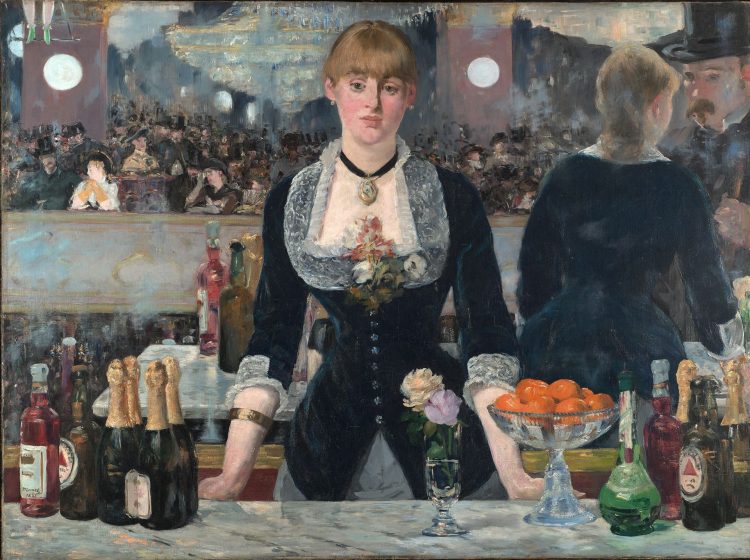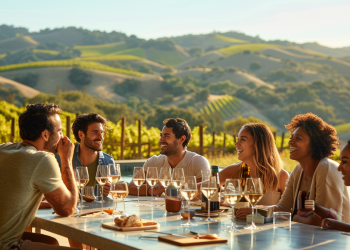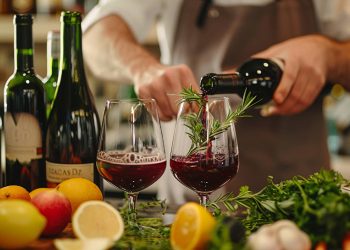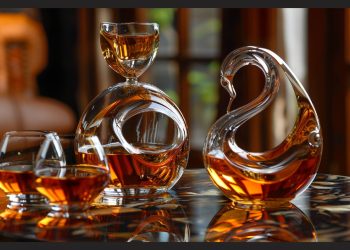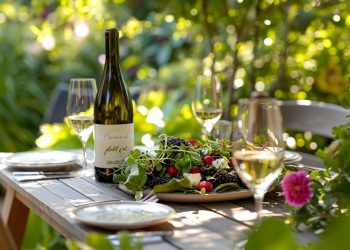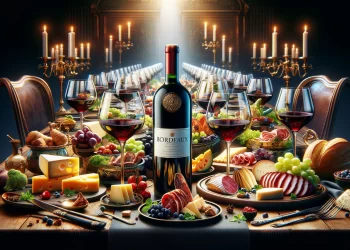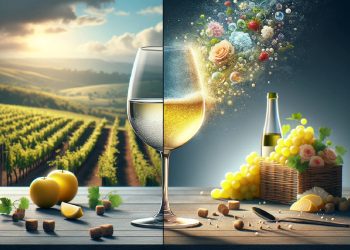The Art of Champagne: In Vino Veritas
Ah, Champagne! Today we talk about the timeless art of champagne… Champagne is more than just a drink; it’s a sparkling nectar, a foamy jewel symbolizing humanity’s pursuit of joy and the ephemeral. Let us embark on a literal and metaphorical journey through sun-drenched vineyards and shadowy cellars. Here, the art of champagne transcends the drink itself, becoming an essence of being.
From its hallowed origins in the Champagne region of France to its esteemed place in celebrations worldwide, champagne has always evoked belonging and elegance. We’ll delve into the secrets behind this enchanting beverage, from the meticulous fermentation and aging process to the careful selection of grapes. We’ll meet influential figures like Dom Pérignon, whose contributions shaped the art of sparkling wine.
Prepare to be captivated by the magic of champagne. Let its bubbles dance on your tongue as you discover its rich history and timeless allure.
The Intriguing History of Champagne
“Wine is bottled poetry.”
Robert Louis Stevenson
Champagne is more than just a drink. It is a story of time, tradition, and the human spirit.
The story begins in the Champagne region of France, where the monks of Hautvillers Abbey played a pivotal role in the early development of sparkling wine. In the 17th century, they discovered that leaving wine in the bottle for a second fermentation produced a sparkling beverage that was both delicious and refreshing.
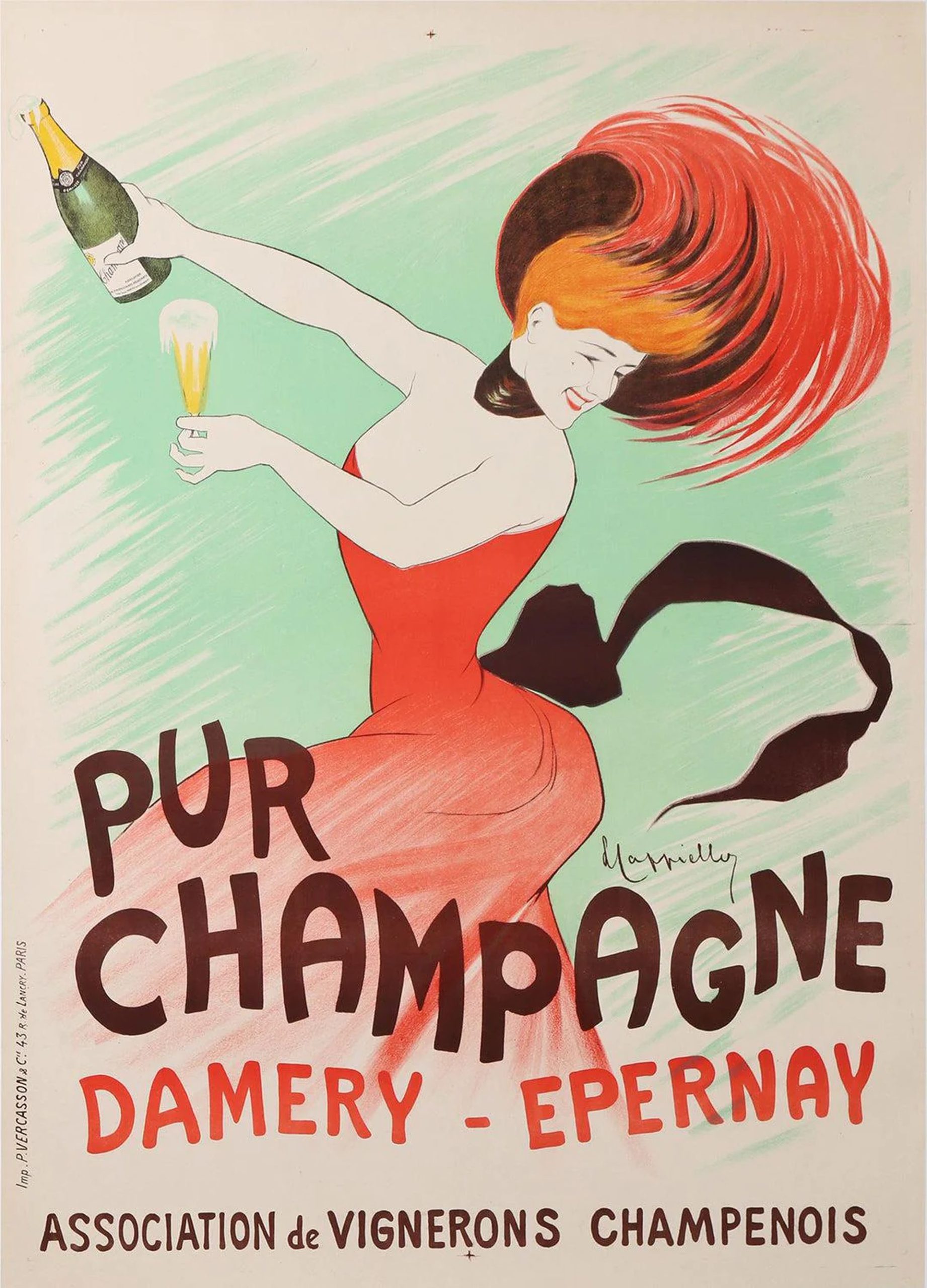
Champagne quickly gained popularity among royalty and the wealthy. In the 18th century, Dom Pérignon, another monk from Hautvillers Abbey, further refined the production process, creating a champagne that was both elegant and complex.
Today, champagne is enjoyed around the world as a symbol of celebration. It is the drink of choice for weddings, birthdays, and other special occasions.
The history of champagne is a fascinating tale of discovery, innovation, and the power of human ingenuity. It is a story that is sure to captivate anyone who takes the time to learn it.
The association of Champagne with royalty grew, with Reims becoming the spiritual capital and hosting coronations for eight centuries. The reputation of the Champagne region continued to flourish, thanks to its rich history and connection to the aristocracy.
Dom Pérignon – The Myth, The Man
Picture this: a Benedictine monk, cloistered in the chilly depths of a monastery cellar, tinkling with bottles and potions like a medieval alchemist. This is the legend of Dom Pérignon, a man whose name has become synonymous with champagne. But, as with all great stories, the truth is more effervescent than fiction. Dom Pérignon did not invent champagne, but he was a maestro of blending, a virtuoso who could make grapes sing in harmony.
The Science Behind Champagne Production
“One should always be drunk. That’s all that matters; that’s our one imperative need. So as not to feel Time’s horrible burden one which breaks your shoulders and bows you down, you must get drunk without cease.”
– Charles Baudelaire
Exploring the art of champagne’s need to intricate process of crafting Champagne, you’ll delve into the science behind its production. Here are three fascinating aspects of the champagne production process that will captivate you:
- The méthode champenoise: Discover the traditional method of creating sparkling wine, known as the méthode champenoise. This technique involves a second fermentation in the bottle, creating the characteristic bubbles that make Champagne unique.
- The role of yeast: Learn how yeast plays a crucial role in Champagne production. During the second fermentation, yeast consumes sugar and produces carbon dioxide, which gets trapped in the bottle, creating bubbles. This process is carefully controlled to ensure the right amount of carbonation and consistent quality.
- The art of blending: Understand the skillful art of blending different grape varieties to create exceptional Champagne. Pinot Meunier, Pinot Noir, and Chardonnay grapes are carefully selected and blended to achieve the desired flavors and aromas. This blending process is crucial in creating the signature taste that Champagne enthusiasts adore.
- The Role of Terroir: Terroir is a word that rolls off the tongue like a fine wine. It’s the essence of the land, the chorus of soil, climate, and human touch that gives each bottle its unique character. Champagne is not just a drink; it’s a geography lesson, a sip of the earth’s narrative.
Styles and Flavors of Champagne
The various styles and flavors this exquisite sparkling wine offers will captivate you as you delve into the art of champagne. Champagne, often referred to as the epitome of luxury, is a French wine known for its bubbly nature and elegance. One of the most popular styles of Champagne is Brut, which is dry and crisp with flavor notes of green apple, citrus, and toast.
Other styles include Extra Brut, which is even drier, and Demi-sec, which is sweeter. Each style offers a unique taste experience, allowing you to find the perfect Champagne to suit your palate. Whether you prefer a delicate and fruity Champagne or a bold and toasty one, the world of Champagne has something for everyone to enjoy.
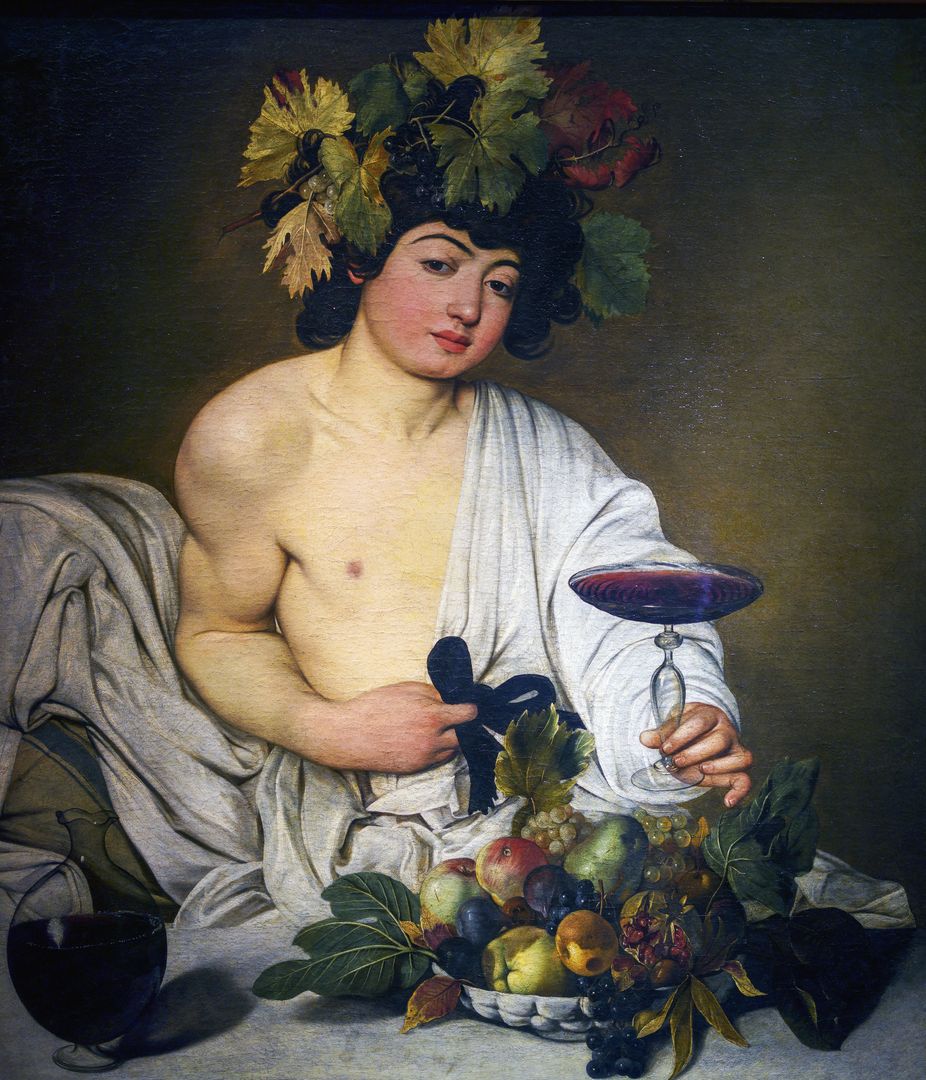
The Cultural Tapestry of Champagne
“Champagne is the only wine that leaves a woman beautiful after drinking it.”
– Madame de Pompadour
Champagne has waltzed through history, gracing the tables of kings and lighting up the dark corners of speakeasies. It’s a symbol of celebration, a marker of milestones. But beyond the glitz and glamour, champagne tells a story of resilience, of a region and its people who have weathered wars and revolutions, only to emerge with their bottles still popping.
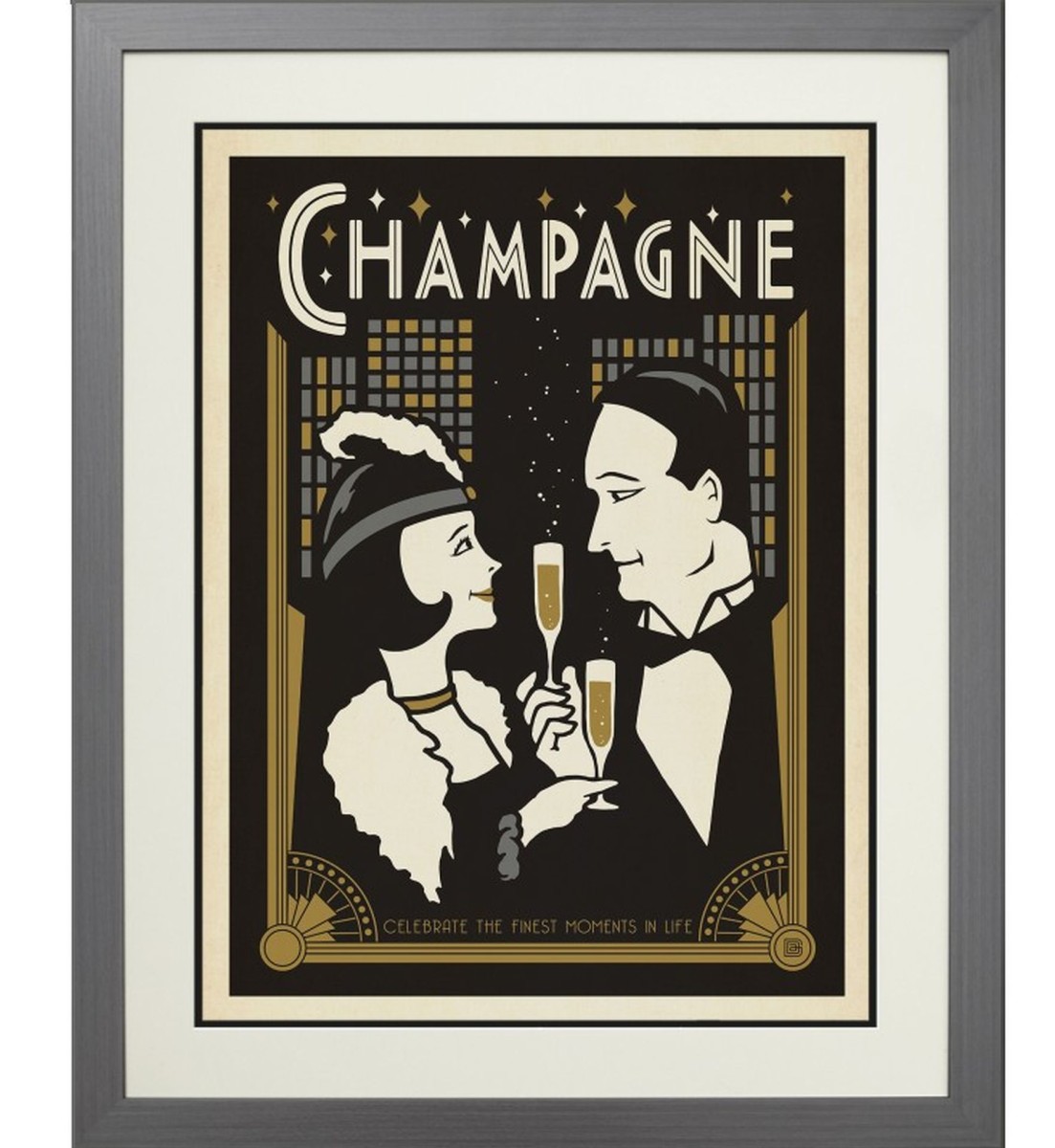
The Philosophical Bubbles
Let’s pop a philosophical bubble here. Champagne is not just a drink; it’s a testament to the human spirit. From the existential musings of Nietzsche to the hedonistic celebrations of Bacchus, champagne has been a muse, a catalyst for thoughts and revelries.
The Art of Enjoying Champagne
“In victory, you deserve champagne, in defeat, you need it.”
– Napoleon Bonaparte
To fully appreciate art of champagne and Champagne’s exquisite taste and effervescence, start by gently swirling the glass to release its delicate aromas. Tasting champagne is an art, a sensory journey that begins with the eyes and ends with the soul. The first glance, the first whiff, the first sip – each a chapter in a story of discovery. The bubbles, those tiny architects of joy, each one a carrier of history, culture, and a bit of magic. As you embark on your journey of enjoying Champagne, here are three essential tips to enhance your experience:
- Savor the bubbles: Take small sips and allow the bubbles to dance on your palate. Feel the tiny explosions of flavor as they tickle your taste buds, creating a delightful sensation unique to Champagne.
- Embrace tradition: Champagne has a rich history and is steeped in tradition. Raise your glass in a toast, celebrating the special moments in life. Take pleasure in knowing that you are partaking in a time-honored ritual that has been enjoyed for centuries.
- Indulge in the journey: Allow yourself to be transported by the flavors and aromas of Champagne. Let each sip take you on a sensory adventure, as you explore the nuances of different cuvées and vintages. Immerse yourself in the world of Champagne and relish every moment of this luxurious experience.
Pairing Champagne with Life
Champagne is versatile, a companion to both the humblest of meals and the grandest of feasts. It’s a mediator between flavors, a bridge between the senses and the heart. It’s not just about what you pair it with on your plate, but what you pair it with in your life.
Champagne’s Sustainable Future
Champagne’s sustainable future is crucial for preserving the rich traditions and delicate flavors that have made it a timeless and iconic sparkling wine. The champagne industry has embraced sustainable practices and innovation to ensure its longevity. In the face of climate change, adaptation is key.
Champagne houses are implementing biodynamic viticulture, which focuses on holistic and organic farming methods while respecting the natural cycles of the vineyard. By reducing chemical inputs and promoting biodiversity, they are protecting the environment and the quality of the grapes. Furthermore, innovation plays a vital role in the industry’s sustainability efforts.
From exploring new winemaking techniques to developing eco-friendly packaging, Champagne producers are committed to reducing their carbon footprint and embracing a more sustainable future. Through these collective efforts, the art of champagne and the champagne itself will continue to enchant generations to come.
The Eternal Sparkle of Champagne
So raise your glass to the art of champagne’s fascinating world, where history, tradition, and passion intertwine. Did you know that around 300 million champagne bottles are produced yearly? That’s enough to fill 2,000 Olympic-sized swimming pools! From the vineyards of Champagne to the elegant flutes in your hand, every sip of this sparkling elixir tells a story of craftsmanship and celebration. Cheers to the timeless art of champagne, a journey through bubbles that will continue to captivate us for generations to come.
So, my friends, as we journey through these pages, let us raise our glasses to the authors, the sommeliers, the vintners, and the storytellers. In their words, we find the essence of wine – a blend of art, science, and passion. Dive in, and be enthralled by the depths of knowledge.
Cheers to the stories yet to be told, and the lessons yet to be learned. Cheers to that! 🍷✨📖
For More About Wine: Encyclopedia Wines: Cellar of Vinous Knowledge
Sources
- Stevenson, R. L. (n.d.). Quotations on Wine. Retrieved from https://www.brainyquote.com/topics/wine-quotes
- Baudelaire, C. (n.d.). Charles Baudelaire Quotes. Retrieved from https://www.goodreads.com/author/quotes/8310.Charles_Baudelaire
- Madame de Pompadour. (n.d.). Wine Quotes. Retrieved from https://www.wine-searcher.com/quotes
- Bonaparte, N. (n.d.). Napoleon Bonaparte Quotes. Retrieved from https://www.brainyquote.com/authors/napoleon-bonaparte-quotes
- Wikipedia contributors. (2023). Terroir. In Wikipedia, The Free Encyclopedia. Retrieved from https://en.wikipedia.org/wiki/Terroir
- Wikipedia contributors. (2023). Champagne. In Wikipedia, The Free Encyclopedia. Retrieved from https://en.wikipedia.org/wiki/Champagne
- Wikipedia contributors. (2023). Dom Pérignon (monk). In Wikipedia, The Free Encyclopedia. Retrieved from https://en.wikipedia.org/wiki/Dom_P%C3%A9rignon_(monk)
- Wikipedia contributors. (2023). Rhizome (philosophy). In Wikipedia, The Free Encyclopedia. Retrieved from https://en.wikipedia.org/wiki/Rhizome_(philosophy)
- Lexilogos. (n.d.). Old English Dictionary. Retrieved from https://www.lexilogos.com/english/english_old.htm
- Qvortrup, M. (2022). The Short Video Series on Unusual Themes in Philosophy. Retrieved from the provided user text, not available online.

